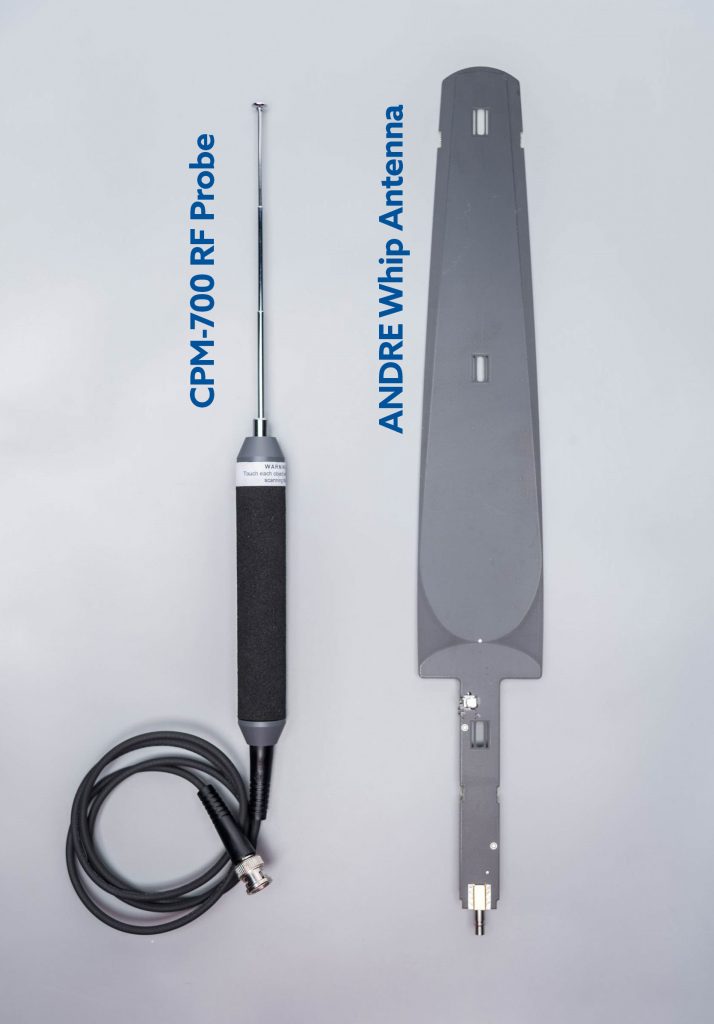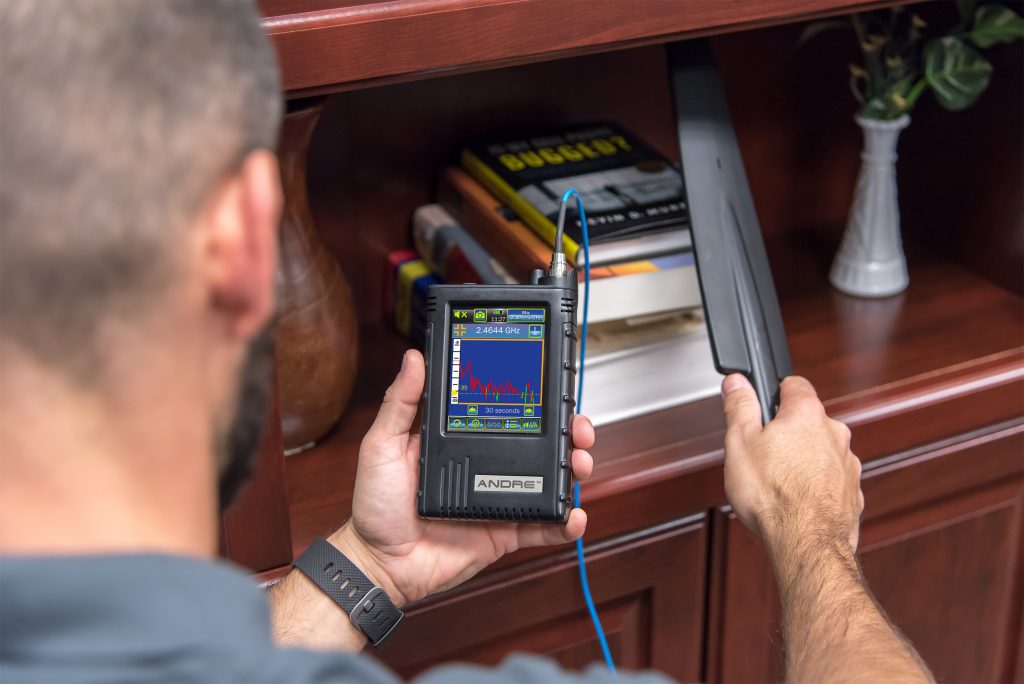 The most commonly used antenna included with the ANDRE Near-field Detection Receiver is the Whip antenna. It is significantly larger than the other antennas and is an effective general-use antenna for locating RF signals. In this article, we will dig into how the whip antenna is designed and why it is considered the more commonly used antenna in the kit.
The most commonly used antenna included with the ANDRE Near-field Detection Receiver is the Whip antenna. It is significantly larger than the other antennas and is an effective general-use antenna for locating RF signals. In this article, we will dig into how the whip antenna is designed and why it is considered the more commonly used antenna in the kit.
A whip antenna is a basic antenna design, typically consisting of a straight, flexible wire or rod connected to a receiver. Shown in the picture is the Standard RF Probe from the CPM-700 Deluxe, which is a traditional whip antenna. When the CPM-700 and ANDRE antennas are viewed side by side, it’s obvious the ANDRE antenna is a very different design.
So is it really a whip antenna?
Well yes, and no: we chose to name it the Whip antenna because the application was similar to the standard RF probe included with the CPM-700. However, it is much more than a simple whip antenna. To be specific, it is a hybrid between a flattened, circular dipole and whip antenna. But that is an over-complicated description and fitting it on a product label would be quite difficult.
By merging multiple antennas in this particular design, broadband sensitivity is maximized across a wide frequency band. This benefits the user by not having to change antennas as often while searching an extensive range for possible illicit devices. The length of the ANDRE Whip antenna allows users to see devices transmitting as low as 30MHz and as high as 6 GHz. Possible devices in that range include baby monitors, GSM bugs and Wi-Fi transmitters.
 The effectiveness of any antenna is a balance between sensitivity, direction, and distance. Antennas such as the Locator Probe are designed to operate in a wide frequency band similar to the Whip, but within a very short distance. The downconverter antenna is very effective as well, but only operates in a directional fashion. The ANDRE needed an effective, general-purpose antenna that offered users a starting point. Sweeping a room with the Whip first can identify hot spots in the room before switching to a directional antenna to pinpoint the location of the transmission. This saves the user time and maximizes efficiency rather than painting a large, unknown room with a directional antenna.
The effectiveness of any antenna is a balance between sensitivity, direction, and distance. Antennas such as the Locator Probe are designed to operate in a wide frequency band similar to the Whip, but within a very short distance. The downconverter antenna is very effective as well, but only operates in a directional fashion. The ANDRE needed an effective, general-purpose antenna that offered users a starting point. Sweeping a room with the Whip first can identify hot spots in the room before switching to a directional antenna to pinpoint the location of the transmission. This saves the user time and maximizes efficiency rather than painting a large, unknown room with a directional antenna.
With a design much more robust than a traditional whip antenna, its versatility makes it the likely first choice to begin a counter-surveillance sweep. Learning how to use the multiple ANDRE antennas congruently saves users time and increases the effectiveness of their sweeps. If you are interested in training specifically geared towards TSCM and the operation of the ANDRE, please visit the REI Training Center.
This is an excerpt from REI’s TSCM Journal (View the full PDF version).
